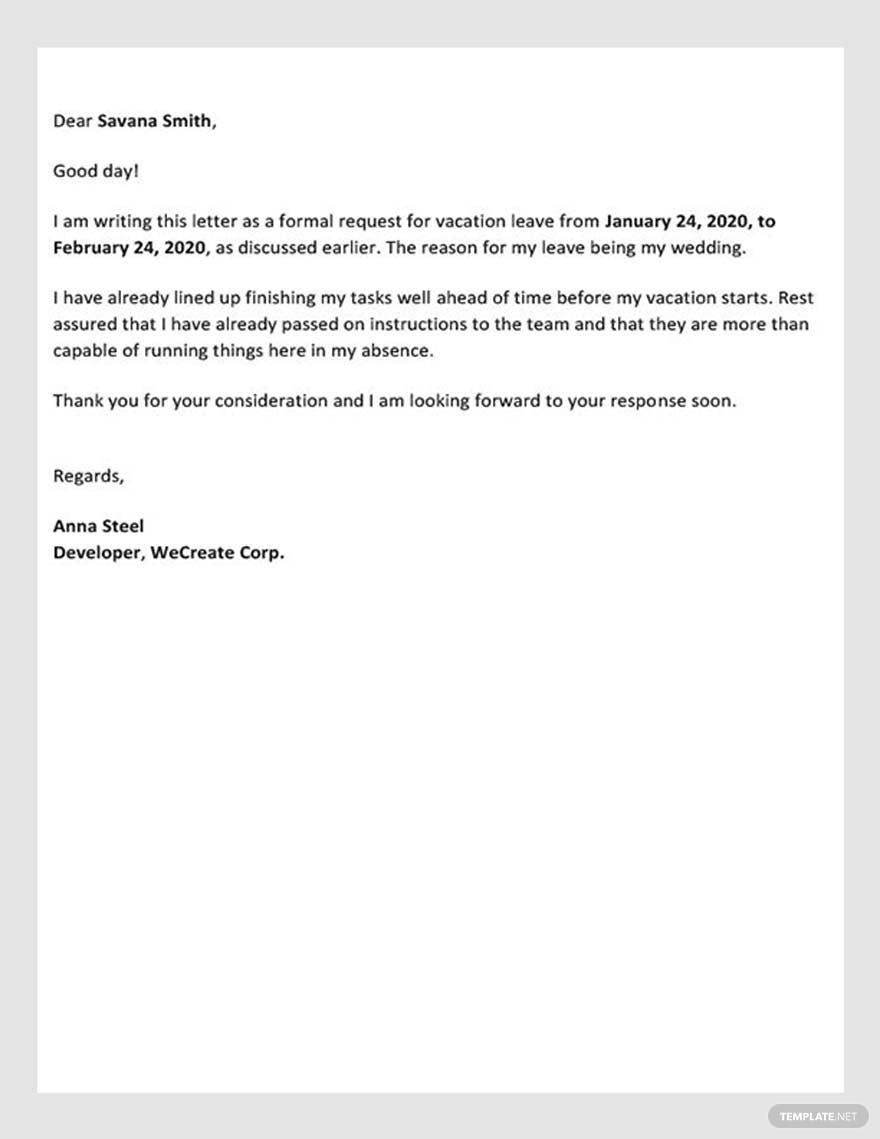Utilizing such a form offers numerous advantages. It streamlines the request process, reducing ambiguity and potential miscommunication. This clarity benefits both the employee, who can be confident their request is properly documented, and the employer, who can easily review and approve or deny requests based on established criteria. A standardized approach also promotes fairness and consistency in leave approval processes.

Further exploration of this topic will cover best practices for designing these forms, legal considerations, and how they integrate with broader human resource management strategies. Examples and practical tips for both employees and employers will also be provided.
Key Components of a Leave Request Form
Effective leave request forms contain essential information to ensure clarity and facilitate efficient processing. These components contribute to streamlined workflows and accurate record-keeping.
1. Employee Information: This section typically includes the employee’s full name, employee ID, department, and contact information. Accurate employee identification is crucial for proper record-keeping.
2. Dates of Leave: The specific start and end dates of the requested leave period must be clearly indicated. Including the total number of days requested can further enhance clarity.
3. Type of Leave: Specifying the type of leave being requested (e.g., vacation, sick, personal) allows for proper categorization and adherence to relevant company policies.
4. Reason for Leave (Optional): While not always mandatory, providing a brief reason for the leave can be helpful for context, especially for longer absences or specific circumstances.
5. Supervisor Approval: A designated space for supervisor signature or electronic approval signifies authorization and ensures adherence to established procedures.
6. Date of Request: Recording the date the request was submitted provides a clear timeline for processing and follow-up.
7. Contact Information During Leave (Optional): For extended absences, providing contact information can be crucial for emergencies or essential communication.
8. Supporting Documentation (If applicable): A space for attaching any supporting documentation if required (e.g., medical certificates for sick leave).
Standardized forms with these elements ensure consistency in leave management processes, promoting transparency and efficiency for both employees and employers. Comprehensive documentation supports accurate record-keeping and assists in resource planning.
How to Create a Vacation Leave Request Template
Creating a standardized leave request template benefits organizations by streamlining the request process and ensuring clear communication. The following steps outline the process of developing an effective template.
1: Determine Required Information: Consider the essential data points needed for efficient processing and record-keeping. This typically includes employee details, dates of leave, type of leave, and supervisor approval. Optional fields like reason for leave or contact information during leave can also be included based on organizational needs.
2: Choose a Format: Select a format that aligns with existing workflows. Options include digital forms (e.g., online forms, spreadsheets), or traditional paper-based forms. Digital formats offer advantages in terms of automation and accessibility.
3: Design the Layout: Structure the form logically, grouping related information together. Clear labels and concise instructions enhance usability. Ensure sufficient space for all required information.
4: Incorporate Company Policies: Reference relevant company policies regarding leave accrual, eligibility, and approval processes. This ensures consistency and transparency.
5: Implement a Workflow: Establish a clear process for submitting, reviewing, and approving leave requests. Digital workflows can automate routing and notifications.
6: Test and Refine: Pilot test the template with a small group of employees to identify any areas for improvement before widespread implementation. Gather feedback and make necessary adjustments to optimize usability and efficiency.
7: Communicate and Train: Clearly communicate the new process and provide training to all employees on how to use the template correctly. This ensures smooth adoption and minimizes confusion.
A well-designed template with clear instructions and a streamlined workflow ensures consistent handling of leave requests, promoting fairness and efficiency within the organization. Regular review and updates maintain alignment with evolving needs.
Standardized leave request procedures, facilitated by well-designed templates, are essential for effective workforce management. These tools ensure clear communication, streamlined workflows, and consistent application of company leave policies. Key components such as employee information, dates of leave, type of leave, and approval sections contribute to comprehensive documentation and efficient processing. A clear process for creating, implementing, and maintaining these templates, coupled with adequate training for employees, maximizes their effectiveness.
Effective management of leave requests contributes significantly to a positive work environment, promoting work-life balance and operational efficiency. Organizations are encouraged to adopt and regularly review their processes to ensure alignment with best practices and evolving business needs. This proactive approach fosters a culture of transparency and fairness, ultimately benefiting both employees and the organization as a whole.